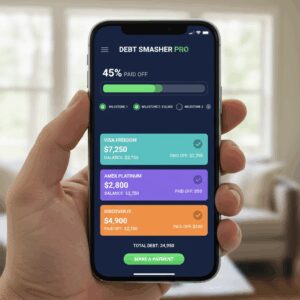
If saving money were only about math, most of us would be wealthy. After all, the formula seems simple: spend less than you earn and set aside the difference. Yet, for many people, saving consistently is one of the hardest financial habits to master. The problem isn’t just dollars and cents—it’s psychology. Our brains, emotions, and environment often work against us. Understanding these barriers is the first step toward overcoming them.
Why We Struggle to Save
1. Present Bias
Humans naturally value immediate rewards more than future ones. Psychologists call this present bias. Buying concert tickets or upgrading your phone feels exciting now, while saving for retirement decades away feels abstract and less motivating.
2. Lifestyle Inflation
As income rises, so do expenses. Instead of banking the extra money, many people upgrade their lifestyle—better cars, larger homes, or more expensive vacations. Over time, saving never seems to catch up.
3. Emotional Spending
Retail therapy is real. Stress, boredom, or even happiness can trigger spending sprees. Swiping a credit card feels like relief or celebration in the moment, but it sabotages long-term goals.
4. Financial Avoidance
Some people avoid looking at their bank accounts altogether because it causes anxiety. Without facing the numbers, it’s hard to set savings goals or stick to them.
The Psychology of Saving Smarter
The good news? Just as our brains can trick us into overspending, they can also be trained to support saving. Here’s how to reframe your mindset:
1. Make the Future Feel Real
One reason people don’t save for retirement is that “future you” feels like a stranger. Researchers at UCLA found that when people viewed age-progressed images of themselves, they became more willing to contribute to retirement savings. Creating a vision board, using savings calculators, or writing a letter to your future self can help make long-term goals tangible.
2. Automate Everything
When money moves to savings before you see it, you eliminate the decision—and the temptation. Direct deposits into savings accounts, automatic retirement contributions, or apps that round up purchases and save the difference are powerful tools.
3. Use Mental Accounting
Behavioral economists describe how people create “mental accounts” for money. You can use this to your advantage by labeling savings buckets: vacation fund, emergency savings, home down payment. This makes savings goals feel specific and purposeful instead of abstract.
4. Reward Yourself (Strategically)
Pure self-denial rarely works long-term. Instead, build small rewards into your plan. Save $200 this month? Treat yourself to a $20 indulgence. This reinforces positive behavior without derailing progress.
5. Anchor Spending With “Opportunity Cost” Thinking
Next time you’re tempted to splurge, reframe it: “If I spend $100 on this now, that’s $100 less toward my travel fund.” This mental shift helps highlight trade-offs and strengthens willpower.
Practical Steps to Build Momentum
- Start Small: Even saving $5 a day builds confidence. Habits matter more than amounts in the beginning.
- Track Progress Visually: Use charts, apps, or even jars to see savings grow. Visual cues trigger motivation.
- Create Barriers to Spending: Delete shopping apps, freeze credit cards in water (yes, people do this!), or require a 24-hour waiting period before large purchases.
- Surround Yourself With Savers: Money habits are contagious. Talking openly with friends or family who prioritize saving can normalize good behavior.
Saving isn’t just a financial skill—it’s a psychological game. The battle between present desires and future security plays out every day in our spending choices. By recognizing biases like present bias and emotional spending, and by applying strategies like automation and mental accounting, you can shift the odds in your favor.
Money saved today isn’t just for emergencies or retirement—it’s for peace of mind, freedom, and opportunities that future you will thank you for. And once saving becomes a habit, it’s no longer a struggle—it’s a lifestyle.
Unlock Full Article
Watch a quick video to get instant access.










